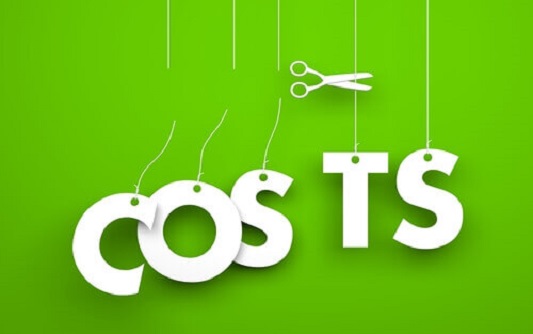- 7 creative options to increase your working capital - February 17, 2020
- 7 common myths about selling your business - February 6, 2020
- Why you should focus on existing customers rather than new ones - February 6, 2020
Cutting costs may sound to most like the simplest and most obvious strategy to improve the financial health of your business, but it can be one of the most effective.
It can be very easy in business, equally as it can be in our personal life, where we sign up to a service or particular supplier and not monitor it any further.
In this day and age where business is having to be ever more competitive in a fast-paced modern world there is mostly always a better deal to be had.
We know from experience that it is all too tempting to chase more sales as a driver for more profit on the bottom line, but particularly when your business is struggling and cashflow is poor looking internally at your costs is the most important first step.
This can take many forms but the following 5 are our best suggestions:
1. Negotiate with Suppliers:
Start by looking at your longer-term contracts. By simply asking your suppliers if they have any better rates or can they adjust their charging structure you may be surprised.
Any other fixed costs should be scrutinised to ensure you are on the best rate. Best examples are energy, telephone, internet and rent expenses.
A great example of this is the energy regulator, Ofgem, had reported 72% of people were on the standard variable tariff and were therefore paying the most expensive energy rates!
The key here is to really negotiate the best deals you can, don’t be afraid to ask the question as in most cases if it doesn’t work out there will be many other companies who can offer you a comparable service at the same or a better price. The key here is that this is an ongoing exercise, it should not just be saved for tough times.
2. Staffing Costs:
One of the largest costs for most businesses is staffing and with the sensitivities with cuts in this area, this deserves a post of its own, which is here:
This does not need to immediately mean cutting headcount, but can include factors like ensuring efficiency of existing staff, encouraging holidays, part time staffing changes
3. Premises costs:
Always be on the lookout for better or more efficient premises costs; whether that’s office space, warehouse, retail/shop. Landlords may be willing to offer a deal with the high level of vacancies we see in some areas. This needs planning well in advance though, thinking about this 6 months before the lease ends means the business owner may lose the upper hand in any negotiation. Moving premises may seem like a real upheaval for any business but if there is a large cost saving to be had then it is well with considering and could contribute to the longer-term strength of your business.
4. Capital Equipment:
The ultimate goal with this exercise is not to necessarily reduce cost but to improve profit. An approach for doing is to look more creatively at how you deal with your equipment in a way that reduces your outlay and creates cash flow.
There may be an option to sell and lease back your equipment. This can potentially reduce ongoing repair costs of redundant equipment and avoid the large capital outlay when you next need to upgrade.
One finer point to be aware of in any contract of this nature is whether you will own the equipment at the end of the lease period. Be sure you understand this and the implication for your business before you sign anything!
These days a lot of technical applications, both hardware and software, are moving more to a subscription-based service. You no longer need to outlay significant costs for a computer system, for example, you can now pay a monthly subscription. Keep your eye out for these kinds of options or look at switching to them for your equipment needs.
This type of strategy creates cash flow for the business while at the same time being very tax efficient.
5. Good and bad Marketing:
One of the big mistakes many businesses make in hard times is cutting the marketing budget. It’s telling the market that you don’t want to grow.
If a business is in a market which is slowing and a company cuts its marketing budget and other competitor do not, or even increase theirs, who is likely to gain a larger marker share?
Marketing, is however, a long-term approach. It can in some cases, be deferred it the market is in a difficult time. The key in leaner times is to identify the ‘good’ and ‘bad’ marketing costs and being smarter about how you market.
The key has got to be about driving sales, so more ‘brand awareness’ type marketing like TV, radio, newspaper ads may need to stop. Activity in store, if you have a retail premises, may be worthwhile as it should drive sales.
The great news is that in this day or social media and online marketing a lot can be done on a smaller budget. We have seen many small to medium size businesses take their marketing function ‘in-house’ where they can do it more easily and more cheaply than employing an external agency. The small additional costs in training to bring some of those costs directly under your businesses control may have large cost saving benefits whilst allowing your marketing plan to continue.
Anything you can save from your cost lines will obviously increase profits, but it also means that same amount of sales or income is no longer required to give you the same level of profit.
The burden of escalating and out of control costs is something that has unfortunately stopped many a business in their tracks, please take the time to review, scrutinise and reduce costs wherever possible.
During the profitable periods is when this strategy is often forgotten so that when the leaner times come costs can easily be larger than they should be, and it can take time to start seeing the effects of any cost saving exercises.
If you are in a leaner period within your business, then this is crucial and important to focus on right now. If you are profitable then build this practise into your regular business processes now.
This will build extra strength back into your business for now and well into the future.

